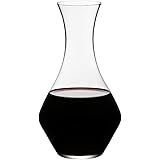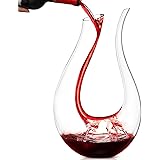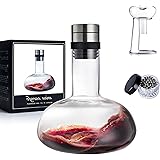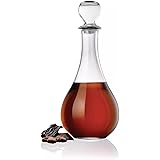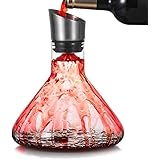Have you ever found yourself at a dinner party, perhaps with a meticulously prepared meal, only to pour a glass of wine and discover that the flavors clash rather than complement? This common predicament often leads to the belief that exquisite wine and food pairing is an exclusive skill, reserved for sommeliers or seasoned experts. However, as explored in the video above, the secret to mastering the art of wine pairing is not about memorizing an exhaustive list of rules; it is truly about understanding a few fundamental principles that anyone can apply to elevate their dining experience.
The journey into wine and food pairing can initially seem daunting, fraught with complex terminology and seemingly arbitrary guidelines. Many individuals are led to believe that a deep, encyclopedic knowledge of vintages and varietals is necessary to achieve a harmonious match. Yet, the reality is far more approachable: successful wine pairing is primarily driven by achieving balance and enhancing enjoyment, rather than striving for an elusive perfection. The challenge, therefore, lies not in the inherent difficulty of the task, but in knowing where to begin. This guide aims to simplify that starting point, offering practical insights and actionable advice for demystifying the world of flavor combinations.
The Foundational Pillars of Wine and Food Pairing
At its core, the synergy between wine and food revolves around two straightforward concepts: matching intensity and either mirroring or contrasting flavors. These aren’t rigid regulations but rather flexible guidelines that allow for creative exploration in your wine and food pairing endeavors. Understanding these foundational principles can transform an ordinary meal into a truly memorable gastronomic event.
Matching Intensity: A Dance of Weights
The first principle dictates that the weight or “body” of the wine should generally match the richness and intensity of the food. A delicate dish, such as a fresh garden salad or a subtle white fish, would be easily overwhelmed by a robust, full-bodied red wine. Conversely, a light-bodied wine would be lost alongside a hearty beef stew or a strongly flavored cheese. For instance, a crisp Sauvignon Blanc, known for its light body and zesty acidity, beautifully complements a fresh salad, where its citrus notes can lift the greens and brighten the overall taste. In contrast, a rich, creamy pasta dish demands a wine with a similar weight, perhaps a buttery oaked Chardonnay, to ensure neither component dominates the other.
Mirroring Flavors: Echoes of Delight
Mirroring, also known as congruence, involves pairing wines and foods that share similar flavor characteristics, thereby amplifying those notes. When the flavors echo each other, a sense of harmony and depth is created. Consider a luscious, oaked Chardonnay with its notes of vanilla and butter. When paired with dishes like lobster thermidor or creamy pasta, the wine’s richness and specific flavor profile are mirrored in the food, leading to an intensified, luxurious experience. Similarly, an earthy Pinot Noir can find its perfect counterpart in mushroom risotto, where the fungal notes in both the wine and the dish create a symbiotic relationship.
Contrasting Flavors: The Art of Balance
Unlike mirroring, contrasting flavors seek to balance a dish by introducing an opposing element that cleanses the palate or cuts through richness. This method is often employed to mitigate fattiness, richness, or saltiness in food. A classic example is the pairing of a high-acid wine with a fatty dish. The acidity in the wine acts like a scrub brush for the palate, cutting through the richness and refreshing the taste buds for the next bite. For instance, the zesty acidity of a Sauvignon Blanc is brilliant with fatty goat cheese, where it provides a refreshing counterpoint. Similarly, the effervescence and acidity of sparkling wine are unparalleled in balancing fried foods, making each bite feel as fresh as the first.
Exploring Wine Categories for Optimal Pairings
The vast world of wine can be categorized to simplify pairing decisions. Each category possesses inherent characteristics that lend themselves to specific food types, offering a clear path to successful wine and food pairing.
White Wines: The Essence of Freshness
White wines are frequently championed for their ability to bring a spark of freshness and zest to the table. Their diverse profiles, ranging from crisp and light to rich and full-bodied, offer a spectrum of pairing possibilities.
- Sauvignon Blanc: Known for its vibrant acidity and herbaceous, citrusy notes (often reminiscent of grapefruit, lime, or even green bell pepper). It pairs effortlessly with goat cheese, grilled vegetables, seafood, and dishes with fresh herbs. The wine’s acidity works beautifully to cut through the creaminess of cheese and complement the clean flavors of fresh produce.
-
Chardonnay: This varietal showcases a remarkable versatility depending on its aging process.
- Oaked Chardonnay: Often aged in oak barrels, it develops flavors of butter, vanilla, and toast, alongside a fuller body. This style is a natural partner for roast chicken, creamy pasta dishes, lobster, or richer fish like salmon. Its richness mirrors the opulence of these foods.
- Unoaked Chardonnay: Fermented in stainless steel, this style retains its crisp apple and citrus notes, offering a lighter, brighter profile. It pairs beautifully with lighter proteins such as grilled chicken breast, fresh seafood, and salads.
Rosé Wines: The Versatile Bridge
Rosé is often considered the chameleon of wine pairing, seamlessly bridging the gap between white and red wines. Its balance of fruitiness and freshness allows it to complement an incredibly wide array of foods, making it an excellent go-to choice when uncertainty arises about the perfect wine and food pairing.
- Dry Provençal Rosé: Characterized by its pale color, crisp acidity, and delicate notes of strawberry, citrus, and herbs, this style sings when paired with Mediterranean flavors. Think of tomatoes, olives, grilled fish, Niçoise salad, or even light charcuterie. Its subtle herbal undertones harmoniously blend with regional cuisine.
- Fruitier Rosés: Styles with a more pronounced fruit forward profile, perhaps from regions outside Provence, can effectively soften the heat of spicy dishes. Thai curries, Indian cuisine, or even Mexican food can find a beautiful balance with a fruitier Rosé, where the sweetness of the fruit mitigates the spice without overpowering the dish.
Red Wines: Structure, Body, and Depth
Red wines introduce elements of body, tannins, and complex structures that often demand heartier food companions. The tannins, which create a drying sensation in the mouth, bind with proteins and fats, making red wines exceptional partners for rich meats.
- Pinot Noir: Known for its soft elegance, bright acidity, and red fruit flavors (cherry, raspberry), often with earthy or mushroom notes. Its lighter body and delicate tannins make it an ideal match for mushroom risotto, roasted duck, salmon, or even leaner cuts of pork. The wine’s acidity and fruitiness can cut through the richness without overwhelming the dish.
- Cabernet Sauvignon: This bold and structured wine, often showcasing notes of blackcurrant, cedar, and tobacco, is rich in tannins. It finds its quintessential match in grilled steak, lamb, hearty beef stews, or aged cheeses. The robust tannins in Cabernet Sauvignon are wonderfully softened by the fats and proteins in these dishes, creating a more mellow and integrated flavor experience.
- Lighter Reds (e.g., Beaujolais, Gamay, Grenache): Wines like Beaujolais, made from the Gamay grape, or lighter Grenache-based wines, are celebrated for their vibrant fruitiness and lower tannin levels. They can be slightly chilled in warmer weather, making them exceptionally refreshing and ideal for summer barbecues, grilled chicken, or even heartier fish dishes. The key here is to match the moderate weight of the wine to the weight of the food, preventing either from being overshadowed.
Sparkling Wines: The Palate-Cleansing Powerhouse
Often perceived as only for celebrations, sparkling wines are, in fact, the unsung heroes of wine and food pairing. Their crisp acidity and lively bubbles possess an incredible ability to cut through fat and salt, acting as an invigorating palate cleanser that keeps each bite feeling fresh.
Whether it’s Champagne, Prosecco, or Cava, these wines are brilliant partners for a surprising array of foods. They shine with fried chicken, potato chips, rich creamy pasta, and even charcuterie boards where their effervescence cleanses the palate after salty meats. Furthermore, sushi and oysters are elevated by the clean, refreshing qualities of sparkling wine, which enhances their delicate flavors without overpowering them. The bubbles essentially reset your taste buds, ensuring that the flavors of your food are continually renewed and enjoyed.
Regional Pairings: A Timeless Culinary Tradition
One of the most reliable and historically sound approaches to wine and food pairing stems from regional traditions. Across the world, wine and food have evolved side by side, creating inherent harmonies that feel utterly effortless. These pairings are not based on strict rules but on centuries of cultural and agricultural interplay, where local ingredients naturally complement local beverages.
- Italy: The vibrant red wines of Tuscany, like Chianti (primarily Sangiovese), developed alongside robust, tomato-based pasta dishes, hearty meat ragùs, and aged cheeses. The high acidity and savory notes of Chianti naturally balance the rich, often acidic flavors prevalent in Italian cuisine. Beyond pasta, imagine Chianti with Florentine steak or a rustic wild boar ragù, where the regional connection is undeniable.
- France: In Provence, the crisp, dry Rosés are inseparable from the Mediterranean diet of the region. They naturally complement fresh seafood, grilled vegetables, garlic-infused dishes, and herbs like rosemary and thyme. The subtle fruitiness and refreshing acidity of a Provençal Rosé act as a perfect foil to the often sun-drenched, herbaceous flavors of Southern French cuisine.
- Spain: Tempranillo from Rioja, with its notes of cherry, plum, and often vanilla from oak aging, finds perfect partners in the region’s culinary staples. Lamb (cordero), various tapas, and regional cheeses like Manchego are classic pairings. The structure and depth of Rioja Tempranillo stand up to the rich, often savory and sometimes smoky flavors of Spanish dishes, creating a deeply satisfying experience.
Experience the Pairing: Travel to Wine Regions
For those who wish to deepen their understanding, visiting these wine regions offers an immersive experience. Provence welcomes visitors with its fragrant lavender fields and sun-drenched vistas, particularly from late spring through early fall, when the dry Rosés are at their freshest and the Mediterranean produce is abundant. Tuscany, with its iconic rolling hills, offers rustic Italian cuisine and the chance to taste Chianti Classico at its source, with spring or autumn providing the ideal weather for enjoying the food and scenery. Rioja in Spain is vibrant year-round, but the fall harvest festivals are especially memorable, offering a sensory feast of hearty cuisine, traditional festivities, and an abundance of Tempranillo. These experiences solidify the intuitive connection between regional food and wine.
The Universal Wine and Food Pairing Trick
When all else fails, and you’re faced with an unfamiliar dish or an overwhelming wine list, remember this simple, universal trick: pair food and wine from the same region. This is truly the “cheat code” of wine and food pairing. Local wines and local cuisines have evolved together over centuries, adapting to the same climate, soil, and cultural influences. Consequently, they almost always complement each other naturally and effortlessly. Whether you’re enjoying a crisp French Rosé with Provençal seafood or a robust Spanish Rioja with lamb, you are unlikely to go wrong when you allow the region to guide your choice. This principle ensures that flavors harmoniously intertwine, creating a delicious and authentic dining experience every time.



